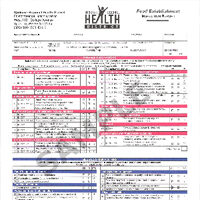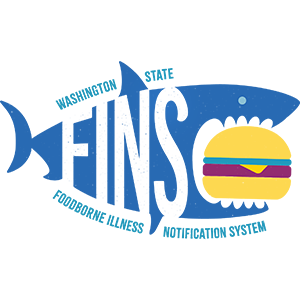Food Safety | Food Establishment Inspections
Understanding the Inspection Report Form
At each food establishment, inspectors observe food handling practices, check food temperatures, discuss food safety with operators, and much more.
Contact Us
Overview
At each food establishment, inspectors observe food handling practices, check food temperatures, discuss food safety with operators, verify sources of food, inspect storage areas, assess sanitation, check equipment, and check water temperatures.
If violations of the food regulations are observed during the inspection, the violations are written on the inspection form, and the person in charge is notified of the required corrective action. High-risk violations must be corrected immediately.
Establishments are generally inspected at least one to two times per year depending on the complexity of the menu. Non-compliance may result in additional inspections.

Sample Food Inspection Form
View a sample version of the Food Inspection Form.
Purpose of Inspection
Food establishments are inspected for a variety of reasons.
Routine inspections are regular, unannounced inspections of the food service operation.
First re-inspections are conducted to check compliance of critical violations and repeat violations that were identified at routine inspections.
Second re-inspections are conducted to check compliance of repeat violations identified at 1st reinspections. A repeat violation identified at a 2nd reinspection results in permit suspension and temporary closure of the establishment.
Follow-up inspections are inspections conducted within 30 days following a second re-inspection.
Complaint and illness investigations are item-specific inspections based on a complaint received from the public or a potential food-borne illness.
Pre-operational inspections are conducted to check newly constructed, remodeled, or previously closed establishments for proper facility and equipment requirements before the establishment is allowed to open to the public.
Definitions
Establishment type
Spokane Regional Health District classifies establishments by establishment type, based on menu and methods of meal preparation. Establishments that are classified as Complex Restaurants are inspected at least two times per year. All other establishments are inspected at least one time per year.
CDI box
CDI means "Corrected During Inspection." Critical violations must be corrected immediately.
PTS box
Each violation has a point (PTS) value based on its likelihood of causing foodborne illness. Red High Risk Factors usually have higher point values than Blue Low Risk Factors.
Red high-risk factors
Critical food handling practices that, when not done properly, are most likely to lead to food-borne illnesses. Most of these violations found during inspections must be corrected during the inspection. Inability to correct critical violations may result in temporary closure of the establishment.
Blue low-risk factors
Items that are not usually direct causes of food-borne illness. Although they are often the most visible part of the establishment, the likelihood of food*borne illness associated with these factor is very low. If left uncorrected however, they may lead to red high-risk factors. Blue low-risk factor violations found during inspections must be corrected within a prescribed time frame.
PIC signature
The person in charge (PIC) is the person that is responsible for food safety operations at the establishment at the time of the inspection. The PIC is asked to sign for the receipt of the inspection report.

Report Unsafe Food Handling or Foodborne Illness
Please report unsafe food handling practices or foodborne illness to the Washington State Department of Health Foodborne Illness Notification System (FINS).
